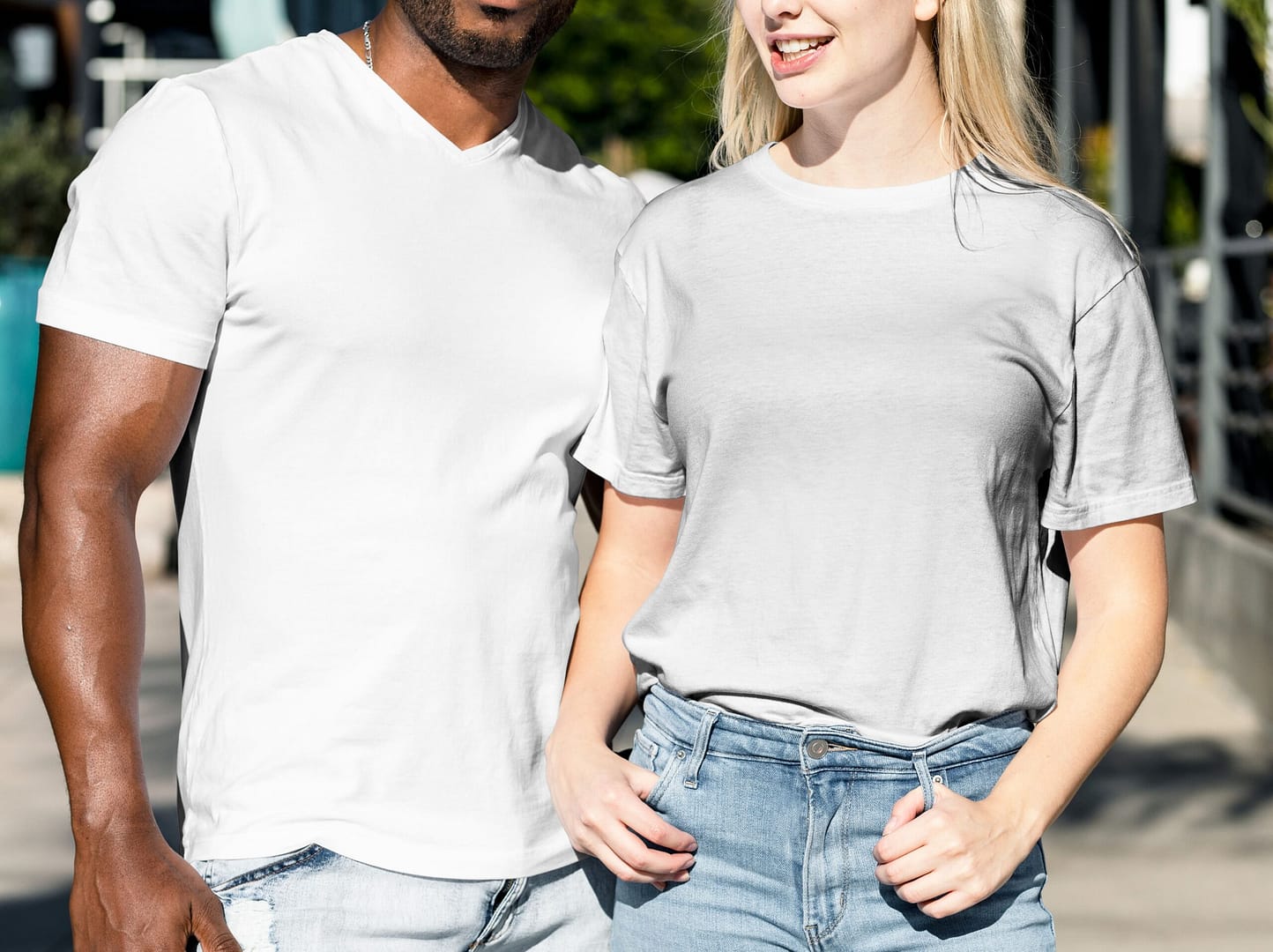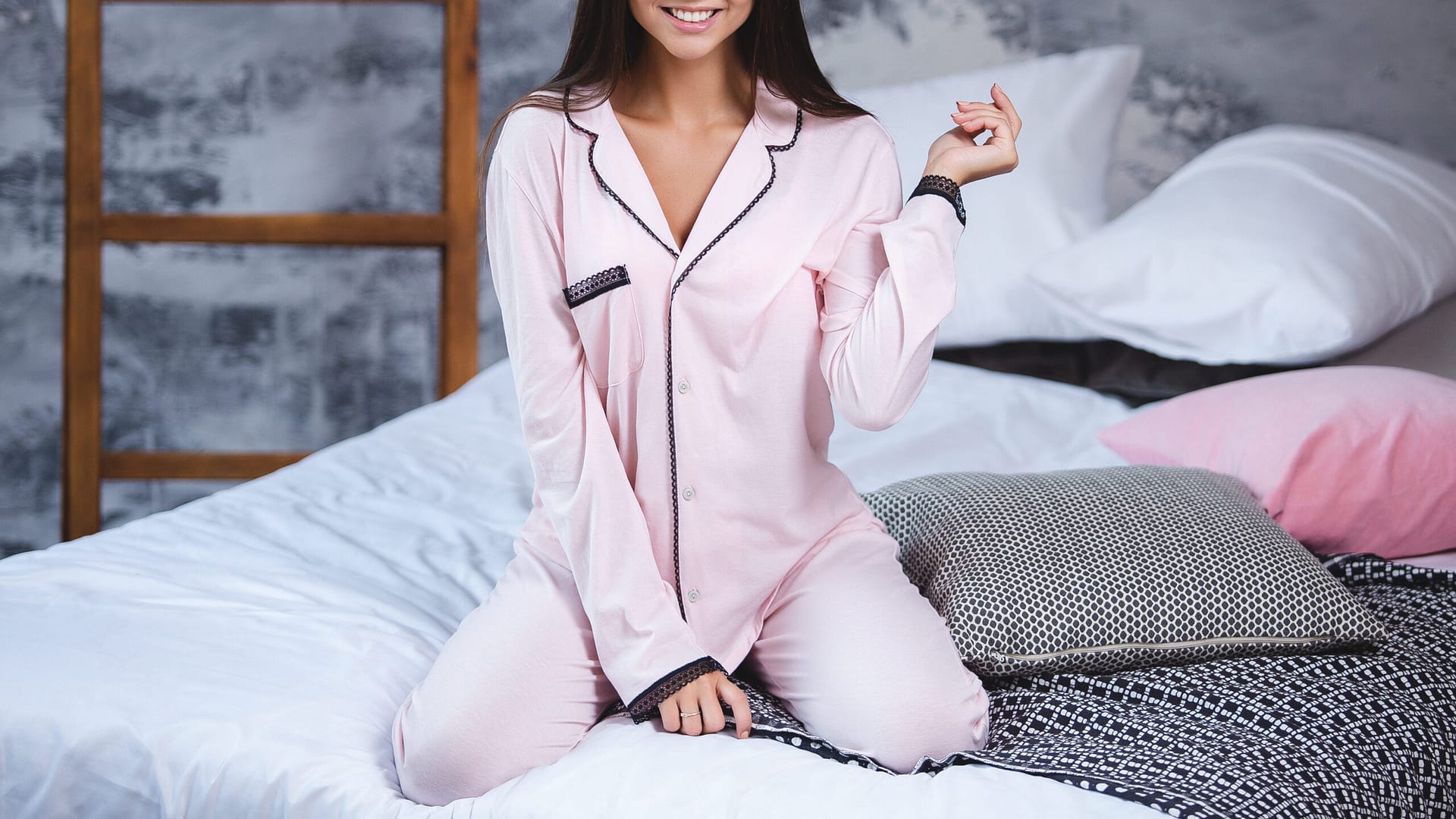Crepe fabric, with its distinctive crinkled texture and graceful drape, has long been a staple in the fashion industry. This versatile material, known for its matte finish and pebbly surface, offers designers and manufacturers a canvas for creativity and innovation. The origins of crepe fabric can be traced back centuries, where it was prized for its elegant appearance and utilized in a variety of cultural garments. Today, crepe fabric is celebrated not only for its aesthetic appeal but also for its wide-ranging applications, from high fashion to everyday wear.
What is Crepe Fabric?
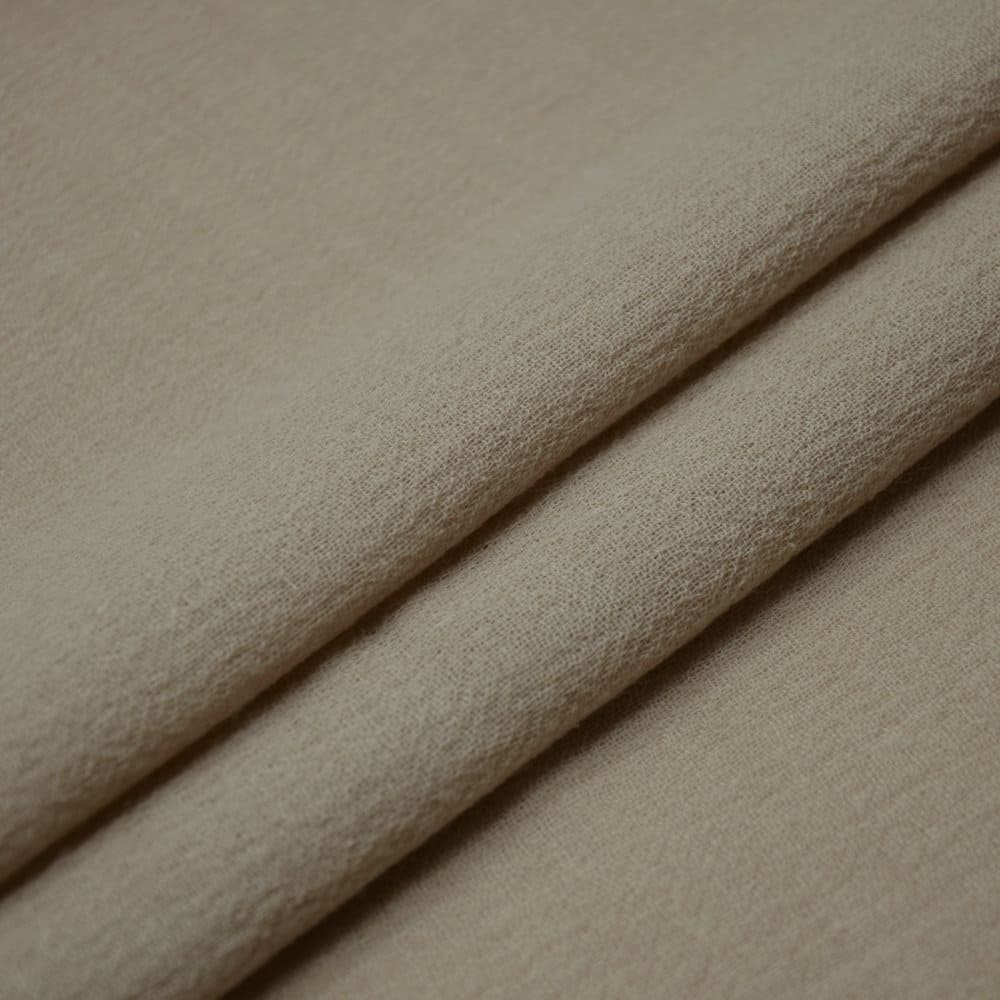
Crepe fabric is a textile with a distinctively crisp, crinkled texture that has made it a beloved choice for a wide range of fashion applications. This texture is achieved through the use of highly twisted yarns, weaving, or finishing techniques that result in its signature pebbled appearance. Crepe can be made from various fibers, including silk, wool, and synthetic materials like polyester, each adding its unique qualities to the fabric.
The diversity of crepe fabric is vast, with each type offering different weights, drapes, and textures to suit various design needs. Silk crepe, for example, is renowned for its subtle luster and elegant drape, making it perfect for luxurious garments. Wool crepe offers a warmer, more structured option, ideal for suits and formal wear. Synthetic crepes, on the other hand, provide a more affordable and durable alternative, suitable for a wide array of fashion pieces.
Crepe’s distinctive texture not only enhances the visual appeal of garments but also adds a tactile dimension that can elevate the overall design. Its ability to drape beautifully makes it a preferred choice for flowing dresses, skirts, and blouses, while its matte finish provides a sophisticated, understated elegance. Whether for a chic evening dress or a comfortable, everyday outfit, crepe fabric brings a unique combination of style, comfort, and versatility to the world of fashion.
The History of Crepe Fabric
The history of crepe fabric is as textured and layered as the material itself. Its origins are thought to date back to ancient China and the Middle East, where it was first crafted from silk for use in traditional garments and ceremonial attire. Over the centuries, crepe spread across continents, its production techniques evolving with the times yet always retaining its characteristic crinkled texture.
In Europe, during the late 19th and early 20th centuries, crepe became a symbol of mourning, especially in Victorian England where black crepe was worn during periods of grieving. This association with mourning attire highlighted the fabric’s subdued elegance and its capacity to convey solemnity and respect.
As fashion evolved through the 20th century, so did the uses of crepe fabric. Designers began to explore the material’s versatility beyond traditional uses, incorporating it into a variety of garments, from casual wear to haute couture. The introduction of synthetic fibers in the manufacturing process expanded the possibilities even further, making crepe more accessible and adaptable to various styles and trends.
How is Crepe Fabric Made?
The manufacturing process of crepe fabric is intricate, involving several steps that contribute to its unique texture and appearance. While the specific methods can vary depending on the type of crepe being produced, the overall process typically includes the selection of fibers, twisting, weaving, and finishing techniques that create its distinctive crinkled surface.
- Fiber Selection: The first step in making crepe fabric involves choosing the type of fiber. This can range from natural fibers like silk and wool to synthetic fibers such as polyester or rayon. The choice of fiber affects the texture, drape, and use of the finished crepe fabric.
- Twisting the Yarns: The characteristic texture of crepe is achieved by twisting the fibers tightly, which is known as hard twisting. This process imparts the yarns with a high degree of torsion, causing them to crinkle or curl. The degree of twist can vary, affecting the final texture of the fabric.
- Weaving: The twisted yarns are then woven using various techniques. The method of weaving can influence the fabric’s final appearance and texture. Some crepe fabrics are woven more loosely to enhance their drape, while others are woven tightly for a more structured feel.
- Finishing Processes: After weaving, the fabric undergoes several finishing processes. These can include treatments to set the crinkles, dyeing, and washing. Chemical treatments are sometimes applied to synthetic crepes to develop or enhance their crinkled texture further.
The entire process, from fiber selection to the final finishing steps, plays a crucial role in creating the fabric’s unique properties. The versatility of crepe fabric production allows for a wide range of textures and weights, making it suitable for various fashion applications. Whether seeking a lightweight, airy fabric for a summer blouse or a more substantial, textured material for a winter dress, the manufacturing process of crepe fabric offers endless possibilities to meet the needs of designers and consumers alike.
Characteristics of Crepe Fabric
Crepe fabric is celebrated for its myriad of unique characteristics that make it a favored choice in both high fashion and everyday wear. These distinctive features stem from its manufacturing process, contributing to its appeal and versatility in the textile industry.
- Texture: The most defining characteristic of crepe fabric is its textured surface, which can range from a fine, subtle crinkle to a more pronounced pebbly appearance. This texture not only adds visual interest to garments but also a tactile quality that is pleasing to the touch.
- Drape: Crepe’s ability to drape elegantly makes it a popular choice for flowing dresses, skirts, and blouses. The fabric can fall softly and gracefully, enhancing the silhouette of the wearer and adding a level of sophistication to the garment.
- Weight: Depending on the fibers used and the weaving technique, crepe can vary greatly in weight. Silk crepe, for example, tends to be lighter and more suitable for delicate, airy garments, while wool crepe is heavier, offering more structure.
- Durability: Despite its delicate appearance, crepe fabric is relatively durable and resilient, capable of withstanding wear and tear. Its textured surface can also help to disguise minor imperfections or wrinkles, making it a practical choice for everyday clothing.
- Comfort: Crepe fabric is generally comfortable to wear. Natural fiber crepes, like silk and wool, are breathable and can regulate temperature well, making them suitable for a variety of climates. Synthetic crepes may offer more stretch, adding to the comfort level.
- Versatility: One of the most significant characteristics of crepe fabric is its versatility. It can be dyed in a wide range of colors, printed with intricate designs, and used in everything from casual wear to bridal gowns. This adaptability makes it a staple in the fashion industry.
- Maintenance: Crepe fabric’s maintenance varies depending on the fibers used. While silk and wool crepes may require more careful handling, such as dry cleaning, synthetic crepes are often easier to care for, being machine washable and less prone to shrinking.
Types of Crepe Fabric
Crepe fabric’s versatility is not just limited to its application but extends to the various types available, each with unique characteristics and suited for different purposes. Understanding these variations can help in selecting the right crepe fabric for your project:
Crepe de Chine: This is a lightweight, soft crepe made from silk or fine synthetic fibers. It has a slightly lustrous finish and a smooth texture, making it ideal for dresses, blouses, and lingerie. Crepe de Chine drapes beautifully and offers a subtle, elegant sheen.
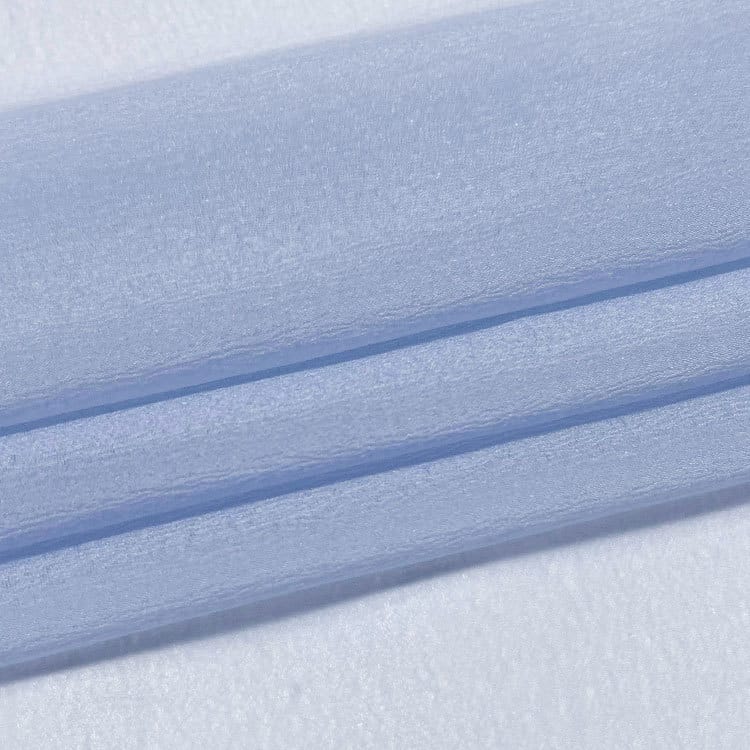
Georgette Crepe: Known for its sheer and lightweight nature, Georgette crepe is made from silk or synthetic fibers. It features a grainy texture, a matte finish, and a bouncy, flowing drape. This type of crepe is perfect for layered dresses, skirts, and scarves.
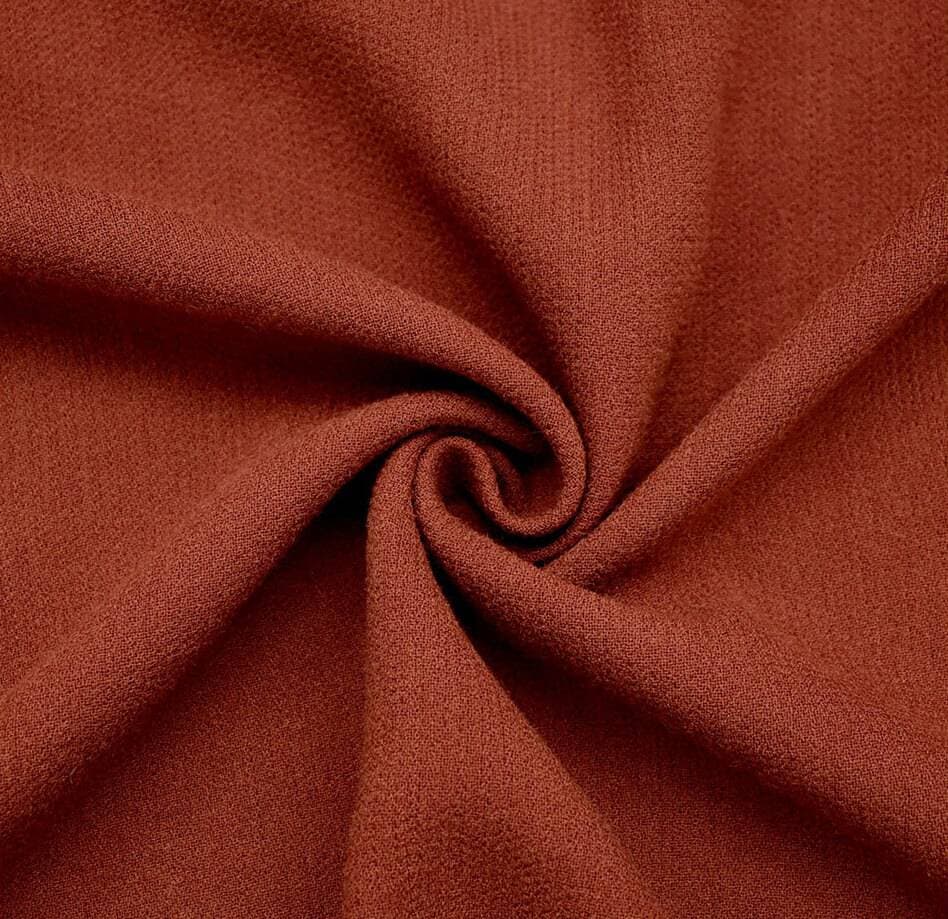
Wool Crepe: Heavier and more substantial, wool crepe is known for its crisp texture and excellent drape. It is an ideal choice for tailored garments like suits, pants, and winter dresses. Wool crepe offers warmth and durability, making it suitable for cooler climates.
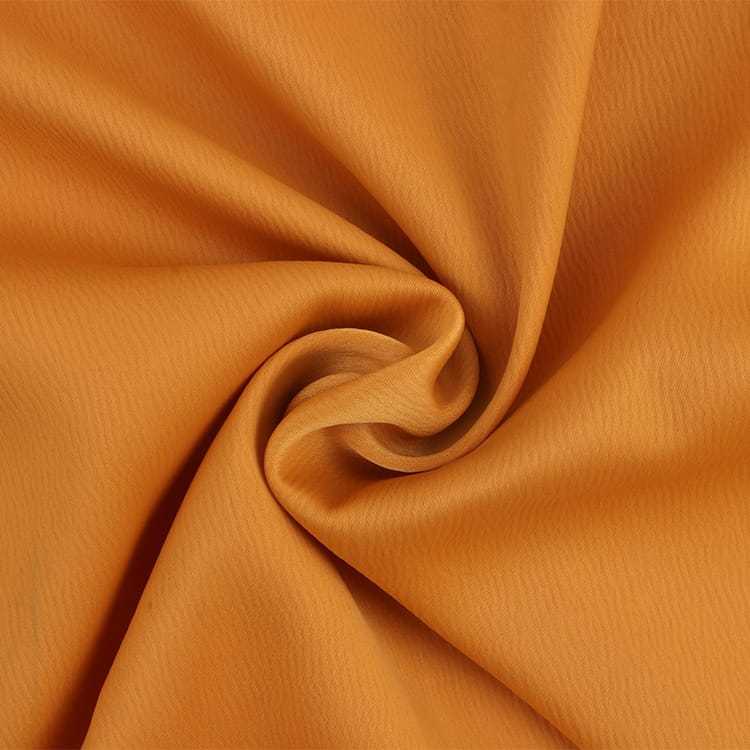
Polyester Crepe: This synthetic version of crepe is versatile, durable, and easy to care for, making it a popular choice for everyday wear. Polyester crepe can mimic the texture and drape of silk crepe but at a more affordable price point. It is widely used in tops, dresses, and skirts.
Crepe Georgette: Similar to Georgette crepe but with a crinklier texture, Crepe Georgette is lightweight and offers a beautiful, fluid drape. It’s ideal for flowing garments that require movement and a delicate appearance.
Moss Crepe: This type of crepe is characterized by its moss-like texture and is typically made from polyester. Moss crepe is stretchy, making it comfortable to wear and suitable for a wide range of garments, including dresses and tops.
Crepon: Crepon crepe has a more pronounced crinkled texture and is often heavier than other types of crepe. It can be made from various fibers, including silk and wool, and is used for garments that require structure with a bit of stretch.
Plisse Crepe: Known for its pleated or crinkled texture, Plisse crepe is created through a chemical treatment that shrinks parts of the fabric to produce a textured effect. It’s often used in skirts and dresses for its decorative appearance.
Each type of crepe fabric brings its own set of characteristics to the table, from the luxurious drape of Crepe de Chine to the durable, easy-care nature of Polyester Crepe. When choosing a crepe fabric for your project, consider the garment’s intended use, desired drape, and texture to select the best type of crepe to meet your needs.
Crepe Fabric Uses
Crepe fabric’s diverse characteristics and types make it a versatile choice for a wide array of fashion and design applications. Its use spans from everyday clothing to haute couture, showcasing its adaptability and timeless appeal.
Fashion Industry: In the realm of fashion, crepe fabric is a favorite for its elegant drape and textured appearance. It is commonly used in:
- Dresses and Gowns: The fluid drape of crepe makes it ideal for evening gowns, wedding dresses, and casual dresses, offering a flattering silhouette that moves gracefully with the wearer.
- Blouses and Tops: Lightweight crepe types, such as Crepe de Chine and Georgette, are perfect for creating blouses and tops that are both comfortable and chic.
- Suits and Tailored Garments: Heavier crepe fabrics, like wool crepe, lend structure and durability to suits, trousers, and blazers, providing a sophisticated look that is suitable for formal and professional settings.
Accessories: Crepe’s texture and versatility also make it a popular choice for accessories. Scarves, ties, and belts crafted from crepe add a touch of elegance and interest to any outfit.
Buying Crepe Fabric
Whether you’re a designer, tailor, or hobbyist, sourcing high-quality crepe fabric is essential to the success of your projects. Here are some tips for buying crepe fabric that will help you make informed choices and ensure you get the best material for your needs:
- Understand the Different Types: As discussed, crepe fabric comes in many variations, each with its unique properties and uses. Familiarize yourself with the different types of crepe, such as Crepe de Chine, Georgette, and wool crepe, to determine which is best suited for your specific project.
- Check the Fiber Content: The fiber used in the crepe fabric affects its texture, drape, and care requirements. Natural fibers like silk and wool offer a luxurious feel and drape beautifully but may require more delicate care. Synthetic fibers, such as polyester, provide durability and are often more affordable and easier to maintain.
- Examine the Quality: When possible, examine the crepe fabric in person. Check for even dye, absence of defects, and the overall feel and texture of the fabric. High-quality crepe should have a consistent crinkle or pebble texture and should not feel overly stiff or synthetic (unless it’s a synthetic crepe intended for that purpose).
- Consider the Weight and Drape: The weight of the fabric will affect its drape and suitability for different types of garments. Lighter crepe fabrics, like Crepe de Chine, are ideal for flowy dresses and blouses, while heavier crepes are better suited for structured pieces like suits and pants.
- Source from Reputable Suppliers: Look for suppliers with a good reputation in the industry. Suppliers who specialize in crepe fabric or have a wide range of textile offerings can provide valuable guidance and ensure you receive high-quality material.
- Inquire About MOQs and Sample Making: If you’re working on a smaller project or are experimenting with a new design, look for suppliers who offer low minimum order quantities (MOQs) and fast sample making. This flexibility allows you to test different crepe fabrics without committing to a large order upfront.
- Consider Sustainability: More consumers and brands are prioritizing sustainability. Look for suppliers who offer crepe made from eco-friendly fibers or adhere to sustainable manufacturing practices. This consideration can enhance the appeal of your final product to environmentally conscious customers.
At Valtin Apparel, we understand the importance of sourcing the right fabric for your projects. Our expertise in fast sample making, low MOQs, and one-stop-shopping for apparel manufacturing services makes us a trusted partner for your crepe fabric needs. By choosing the right supplier and fabric, you can ensure the success of your designs and contribute to the production of high-quality, appealing garments.
Conclusion
Crepe fabric, with its rich history, distinctive texture, and versatile applications, continues to be a cornerstone of the fashion and textile industry. From the elegant drape of a silk Crepe de Chine gown to the structured formality of a wool crepe suit, this fabric embodies a unique blend of beauty, functionality, and timeless appeal. Understanding the nuances of crepe fabric—from its various types to the specific care it requires—enables designers, manufacturers, and fashion enthusiasts to fully harness its potential.
For apparel brands and designers, embracing the versatility and elegance of crepe fabric can elevate your collections, offering garments that are not only visually striking but also ethically and sustainably produced. At Valtin Apparel, we are committed to supporting our clients in navigating the complexities of fabric selection, providing expertise in fast sample making, low MOQs, and one-stop-shopping for apparel manufacturing services. By choosing the right crepe fabric and leveraging its unique properties, you can create garments that stand out in the market and appeal to the modern consumer.



